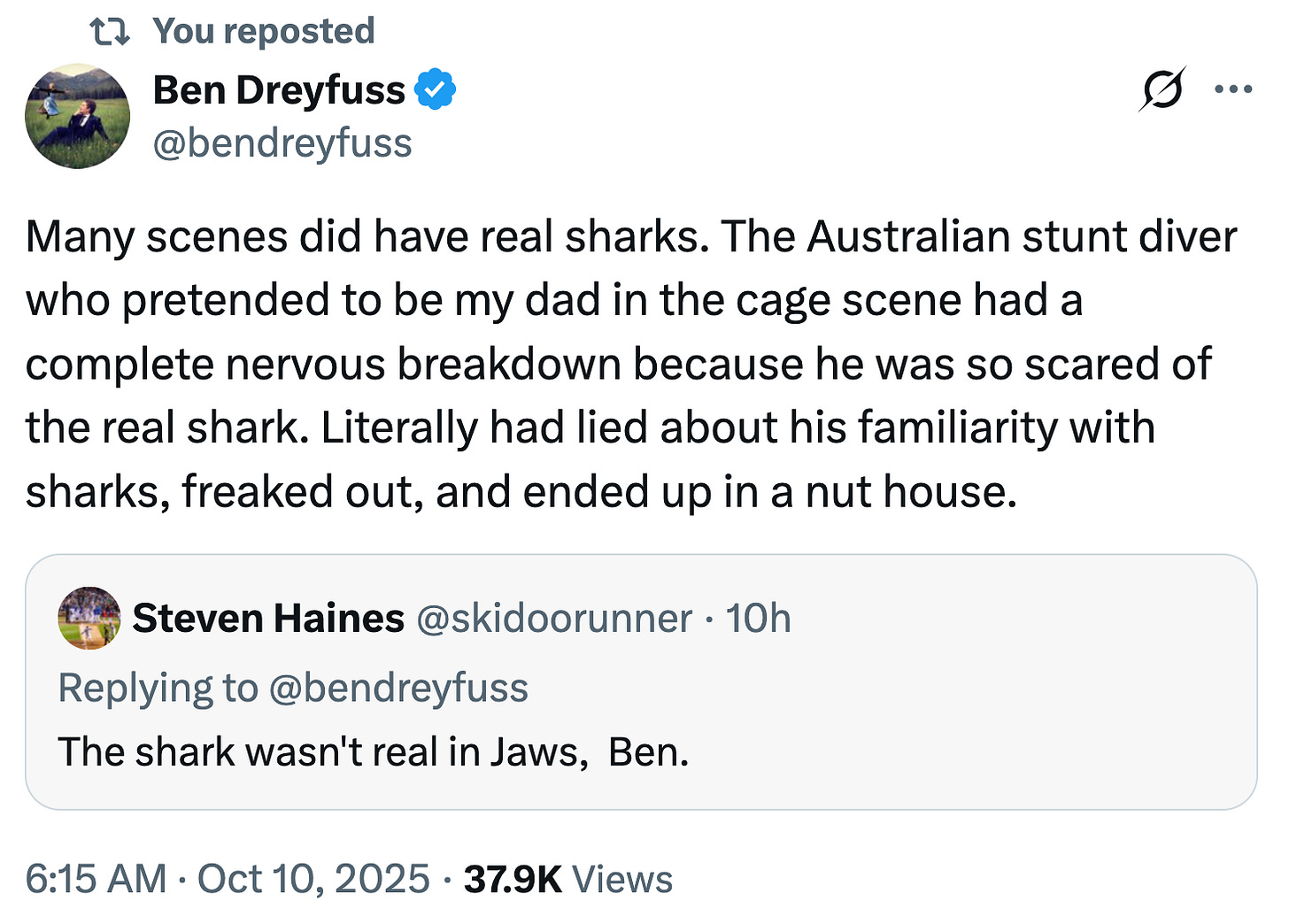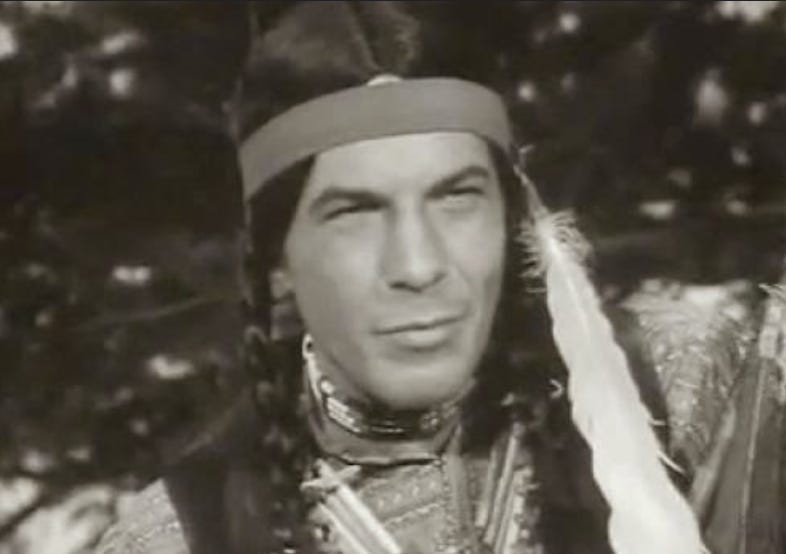Mr. Spock's Advice
Leonard Nimoy explained to his son that when a true professional actor auditions, he answers any question that he might possibly be asked with "Yes."
Ben Dreyfuss, son of Richard Dreyfuss, tells a story about the making of Jaws:
That’s the downside of Leonard Nimoy’s advice to his son on how the answer to any question the casting director might ask you at a movie audition is always “Yes.” Nimoy figured that’s not a lie because you have a few weeks before shooting starts to hire an expert to teach you how to do anything you don’t know how to do yet.
The future Mr. Spock was frequently up for American Indian roles in the 1950s-1960s. I like to imagine Nimoy nailing the table read and then the rest of the interview going like this:
“Fantastic, Leonard, so we’d love for you to play Crazy Horse in our Custer’s Last Stand movie. But, a few questions first. Can you ride a horse?”
“Yes.”
“Can you speak Lakota without an accent?”
"Yes.”
“As you shout curses in fluent Lakota, can you shoot arrows while galloping bareback?”
“Yes.”




I recall that the hero of "Hearts of the West" -- the wannabe cowboy actor played by Jeff Bridges -- follows the same advice, answering "Sure!" to every question, e.g., Can you jump out of a second-story window onto the back of a horse?
This is exactly how Classic Hollywood actor Antony Quinn got his start. In 1936, while filming his classic Western The Plainsman, filmmaker Cecil B DeMille cast Antony Quinn largely on his answering questions pertaining to the role of an Indian "Can you speak fluent Sioux?" and so forth etc. Quinn parlayed his role into two more films for DeMille, and then married his daughter Katherine (which also didn't hurt his rising in Hollywood during this time in his career).
If anything, Spieberg was imitating DeMille, who was among the earliest major filmmakers to insist on realism in scenes that required dangerous stunts--if the actors themselves couldn't or wouldn't do their own stunts themselves, the stuntmen would have to go through the ringer.
Numerous stories persist of among the most dangerous stunts on DeMille's sets in Classic Hollywood, from the real arrows laced with fire being shot at actress Paulette Goddard (who preceded to walk off the set from major fright, and was never cast again in a DeMille film), Gloria Grahame having an elephant put his foot on (or brushing up against) her face while lying on the ground, to of course Victor Mature refusing to wrestle an actual lion (not a midget in a lion suit). After berrating Mature for being yellow, DeMille then proceeded to use his whip against the lion. In his defense he probably thought he was making allowances for Mature, as the lion being used was a "senior citizen" or elderly lion and not one in his prime.
So reading about actual sharks being used in Jaws, filmmakers using the real thing to get a sense of realism from their actors while doing their own stunts (whenever possible) goes back to the beginning of Hollywood. While Cecil B DeMille wasn't the first filmmaker to insist on realism for stunts in his scenes, he was among the most prominent of filmmakers and continued this practice throughout his career.
After all, not only must the show go on, but it has to be as visually realistically appealing a show that the audience is seeing on the screen.